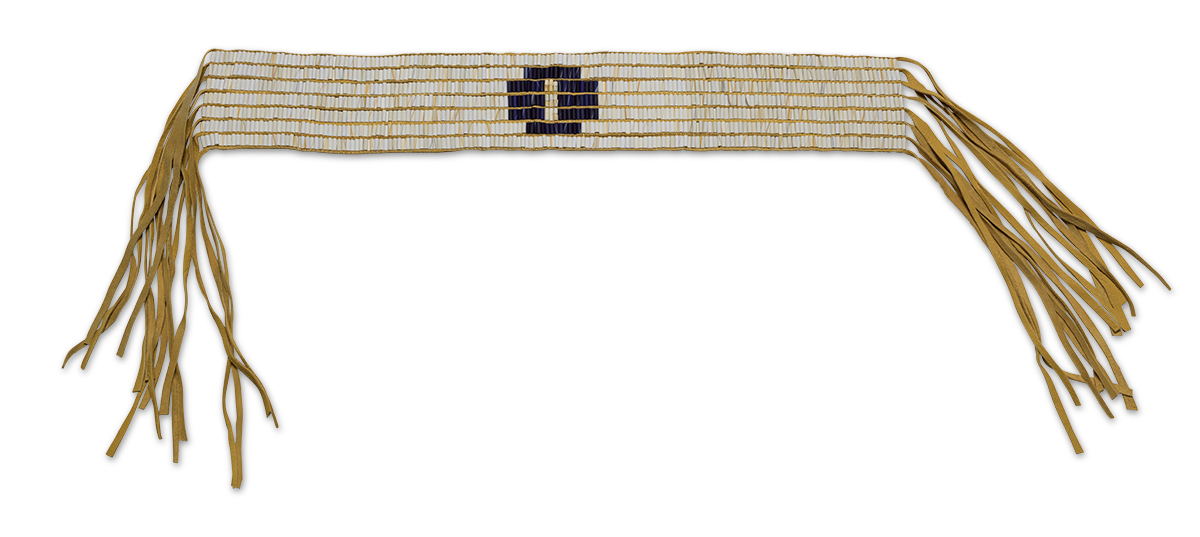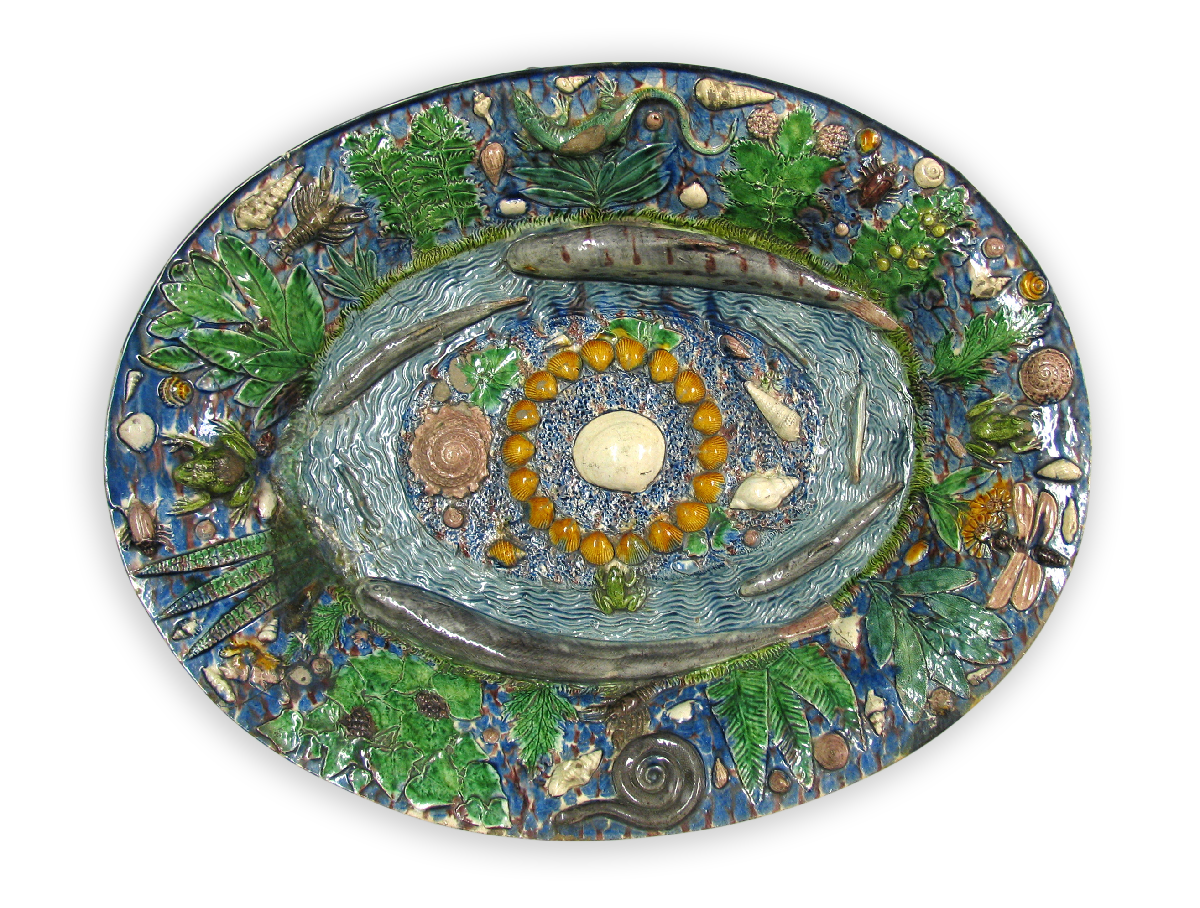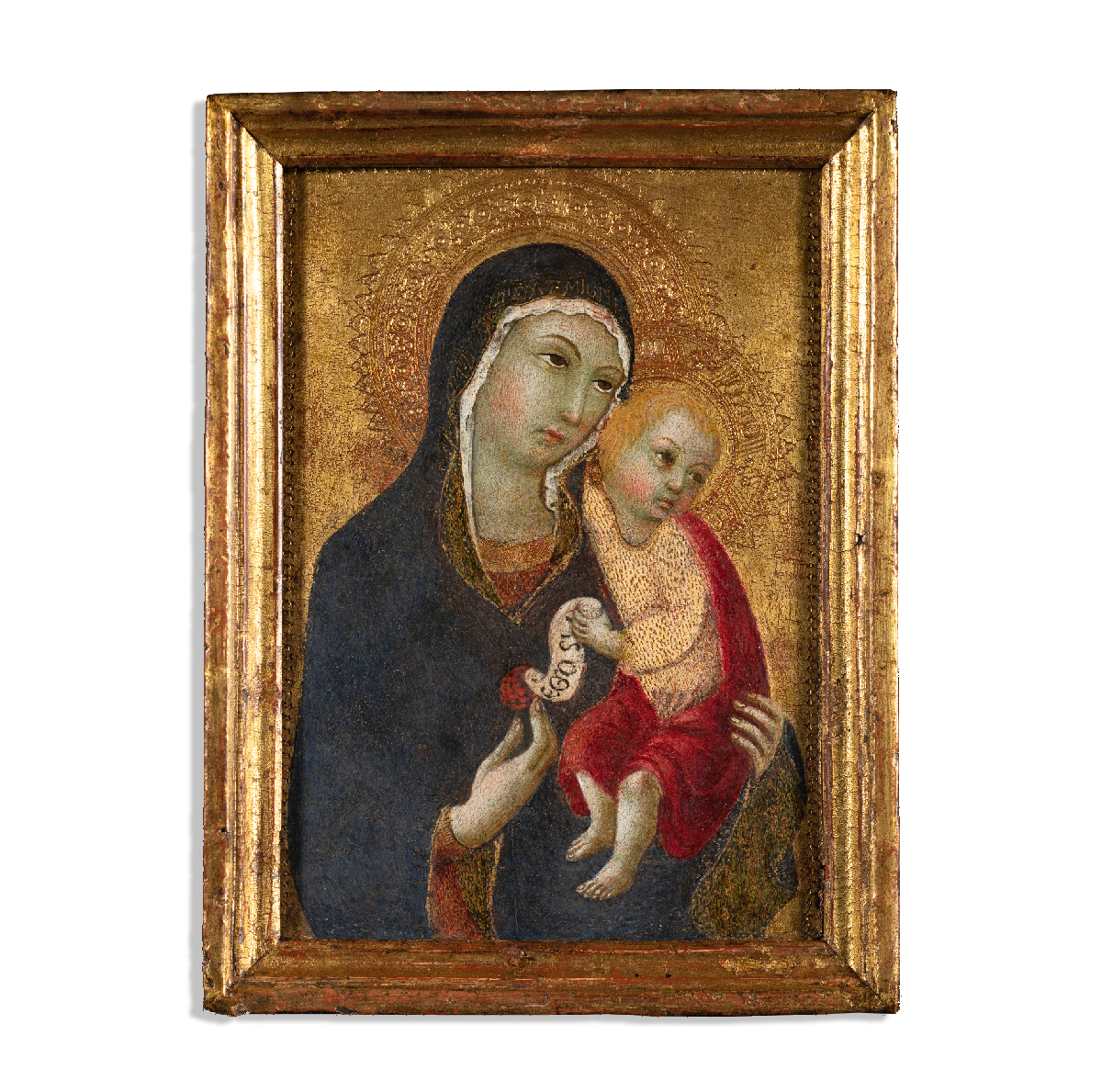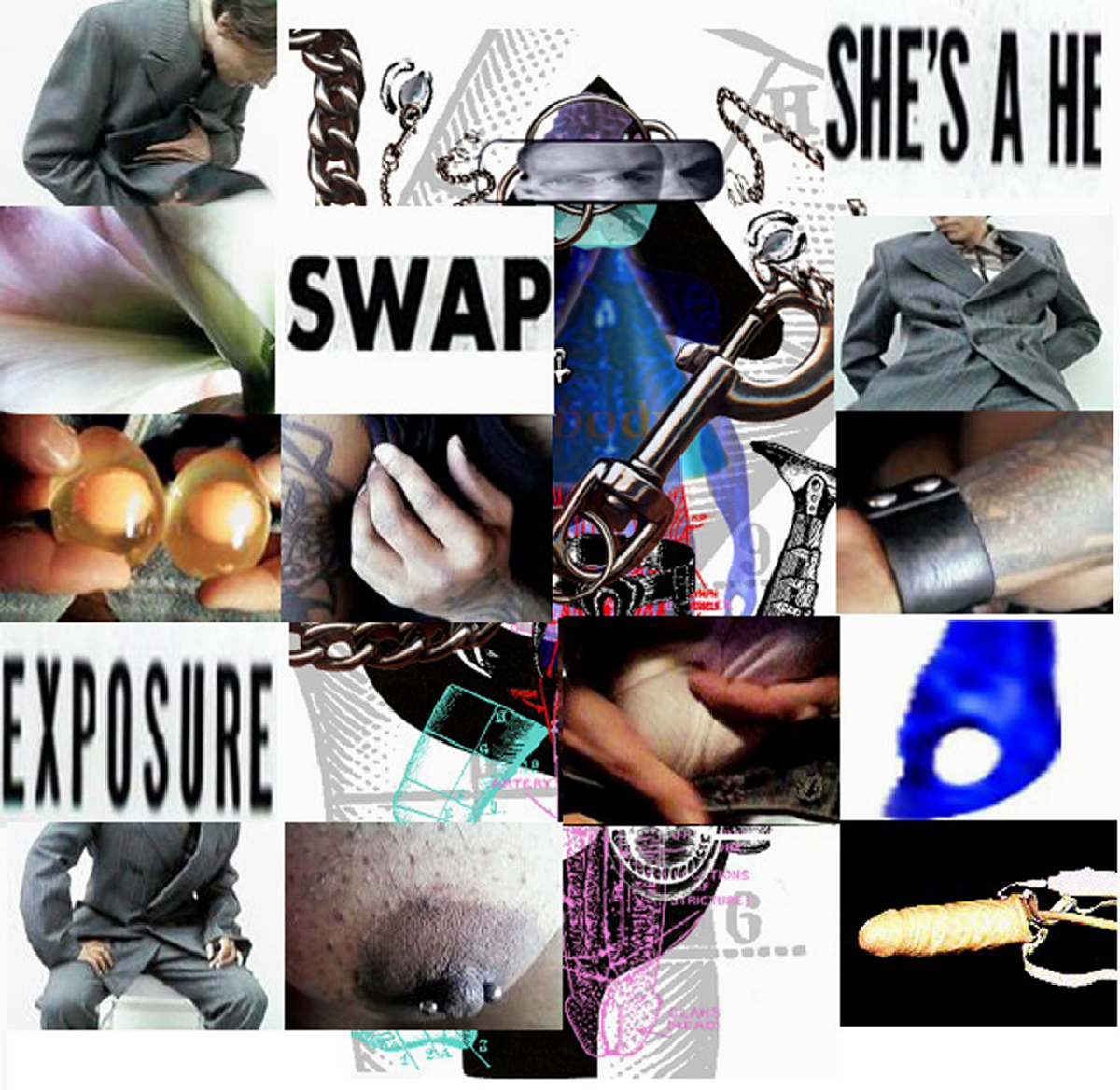Reproduction of Bark Tray with One Beaver Tail Belt
Reproduction of Bark Tray with One Beaver Tail Belt, 2021
Richard Hamell (b. 1946)
Polymer clay beads and leather, 3 × 25 in. (7.62 × 63.5 cm)
Courtesy Jamie Jacobs (Tonawanda Seneca Nation)
Belts made of otgoä (wampum beads)— customarily crafted from quahog shells— are used by the Haudenosaunee (Iroquois) and other Northeastern peoples as healing devices and long-term storage media, a means of recording diplomatic agreements and treaties made between Indigenous nations and with colonizers. The Haudenosaunee view wampum in museum collections as inactive and lying dormant, temporarily unable to fulfill the purpose of facilitating an oral narration of important histories. Some wampum belts have been rightfully repatriated to Indigenous nations, an ongoing process in both the United States and Canada.
The item shown here is a contemporary reproduction of an important belt, Bark Tray with One Beaver Tail (also known as Dish with One Spoon), whose iconography and interpretation dates to the formation of the Iroquois confederacy, as explained by the Peacemaker to the five component nations. Such replica belts, even with non-shell wampum beads, are important for Indigenous teaching; this belt is used by its current Seneca owner for public education and in the recitation of the Great Law of Peace and Coming of the Peacemaker.
See other items in Who Acts on Matter, and When, and Why?







